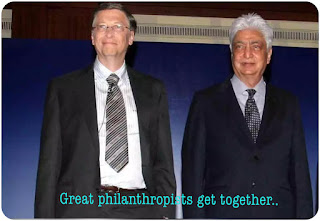 Being active and effective in our daily tasks is one thing all of us look upto. Being effective relieves us of the routine boring work and and gives us more creative time to pursue our interests and hobbies. It is with this objective in mind that we take up tasks and responsibilities. Each completed task, successful or not, gives us valuable learning. If successful, it makes us think how we could have carried out the task better, if a failed attempt, we think what else we should have done to succeed in the task. Either way it is great learning.
Being active and effective in our daily tasks is one thing all of us look upto. Being effective relieves us of the routine boring work and and gives us more creative time to pursue our interests and hobbies. It is with this objective in mind that we take up tasks and responsibilities. Each completed task, successful or not, gives us valuable learning. If successful, it makes us think how we could have carried out the task better, if a failed attempt, we think what else we should have done to succeed in the task. Either way it is great learning.
Recently a study was done across geographies by a faculty member and student from MIT on about 20,000 people across the world, aged 25-60 years who were readers of Harvard Business Review spanning a cross section of junior level and senior level executives from almost all continents, with Europe and US getting maximum representation.
The main points from this study were three and are being highlighted here.1. Prioritise one's tasks and do the most important things first
2. Manage information overload effectively by deciding your intervention strategies, not allowing information overload to drown you.3. Understand the needs of our colleagues for shorter meetings, clear directions and leadership.
 The most important point I wish to prioritise here is on managing one's information overload, notes and interesting information or maybe for news ? Is it really necessary to spend too much time scanning through all this data and information to help us take the right decision. how one can manage the inputs coming from different social media sites, news sites etc..
The most important point I wish to prioritise here is on managing one's information overload, notes and interesting information or maybe for news ? Is it really necessary to spend too much time scanning through all this data and information to help us take the right decision. how one can manage the inputs coming from different social media sites, news sites etc..How frequently do we check our social media posts and sites for updating news and global business updates. Is it really necessary that we need to get updates every ten minutes or is it vital that we need to reply to social media posts as fast as possible.
 Prioritising on our responses are very important. Will our responses kick start a series of responses and replies leading to an overload of information and a wasted feeling of time at the end of all these transactions ? do we take the pain to understand whether we really care for the time of our subordinates ?
Prioritising on our responses are very important. Will our responses kick start a series of responses and replies leading to an overload of information and a wasted feeling of time at the end of all these transactions ? do we take the pain to understand whether we really care for the time of our subordinates ?
The choice is on us to take the right and competent effective decision. While writing this post I have resisted multiple efforts to update myself on social media postings and concentrate on writing and reading which I have prioritised over the next one hour.
george..
Ref : Pozen, Robert and Kevin Downey, What makes some people more productive than others ?, Harvard Business Review, March 2019.

































